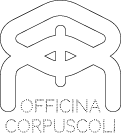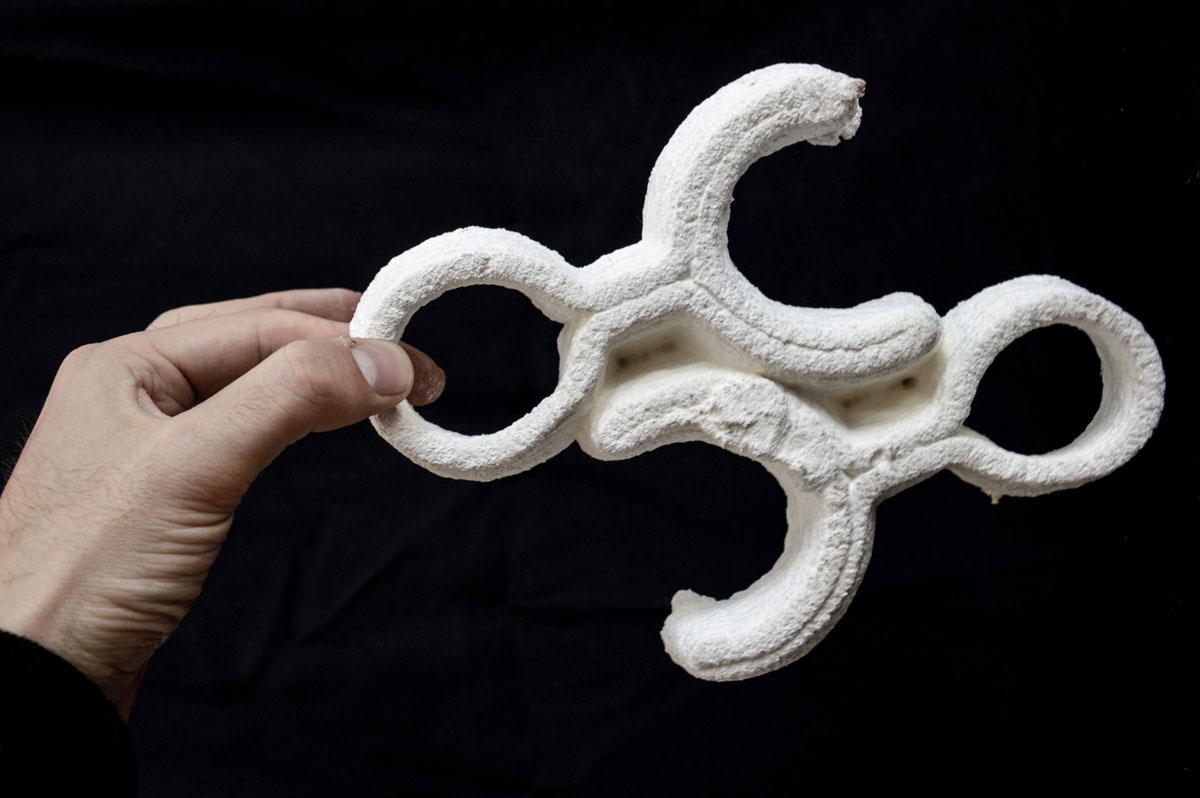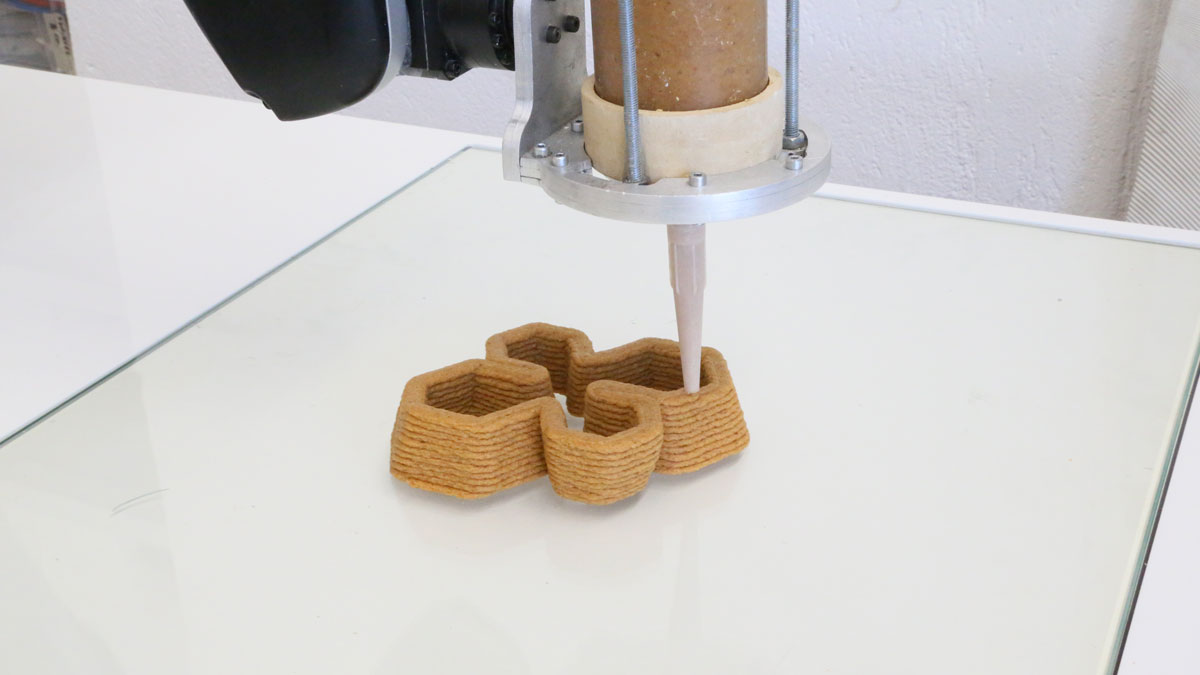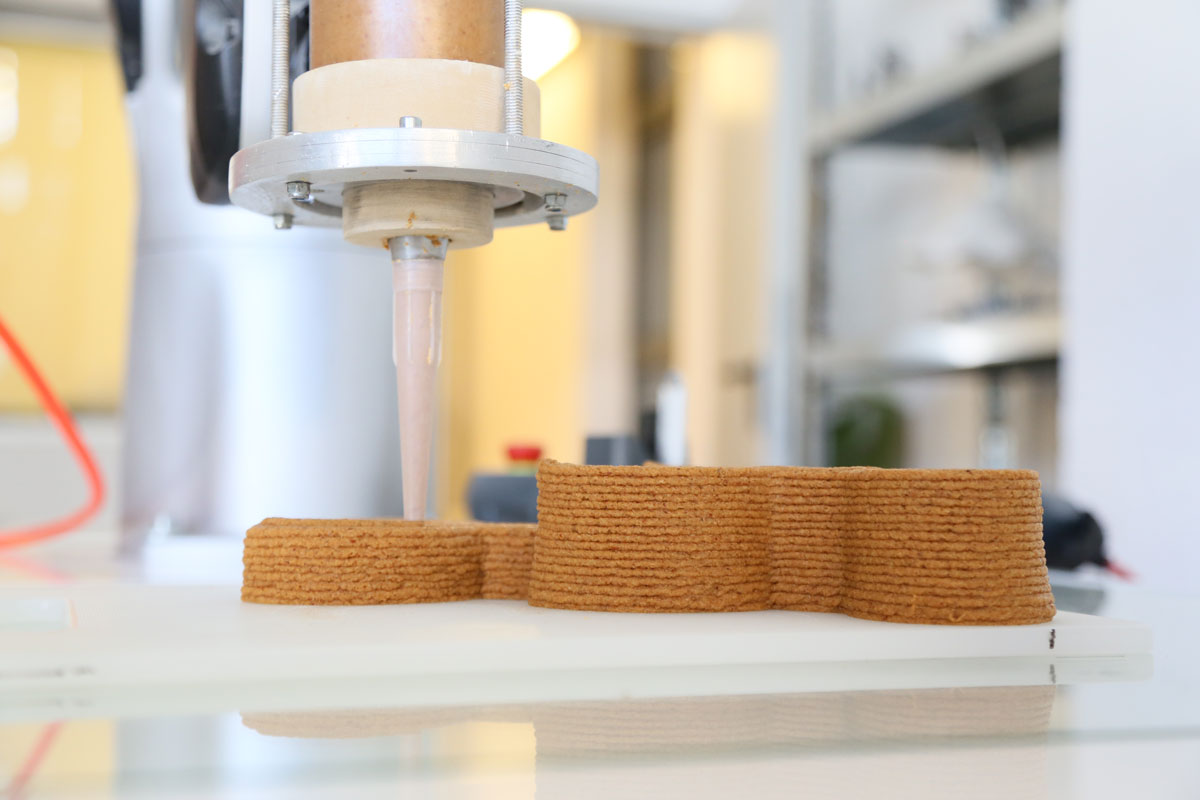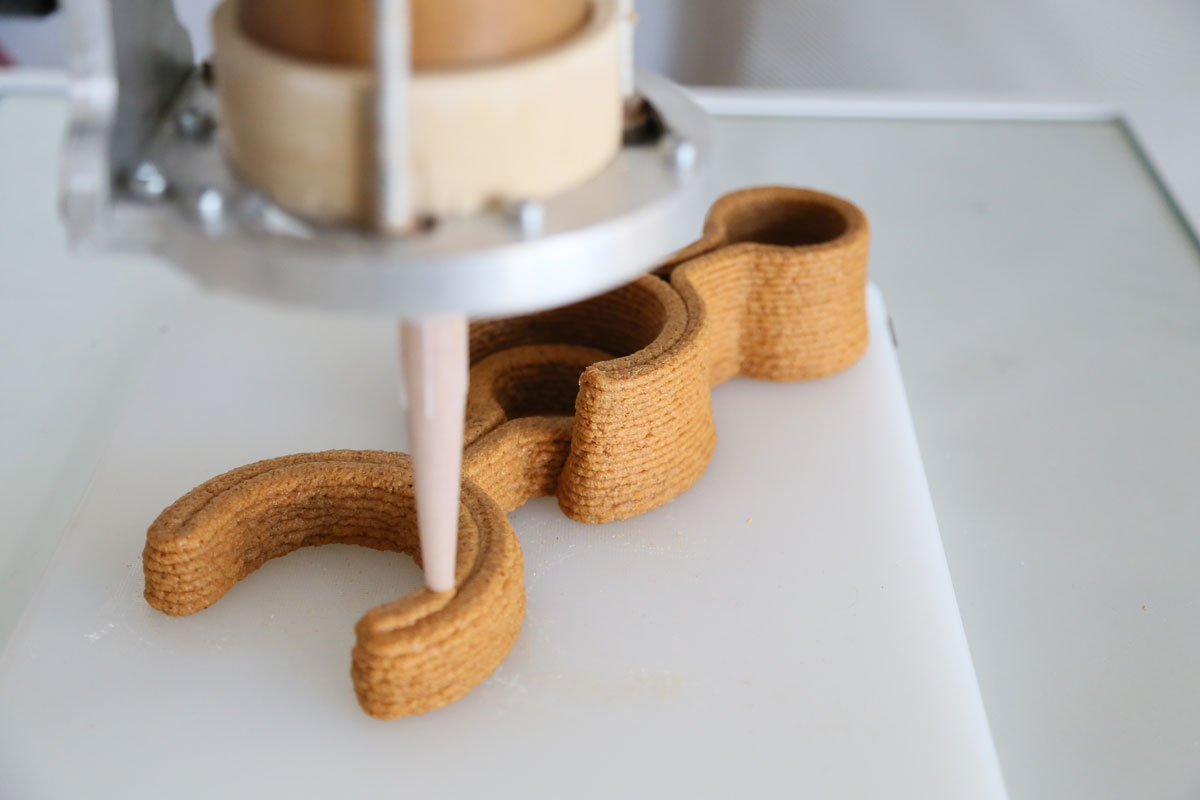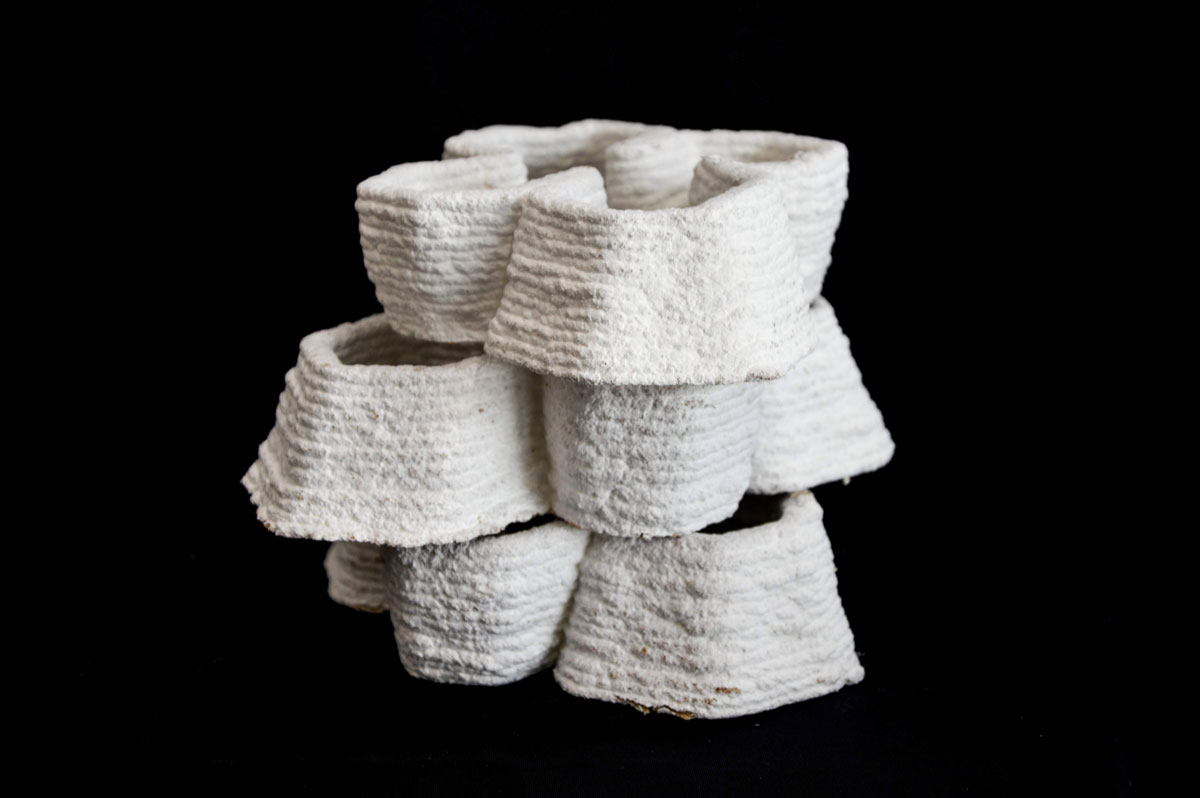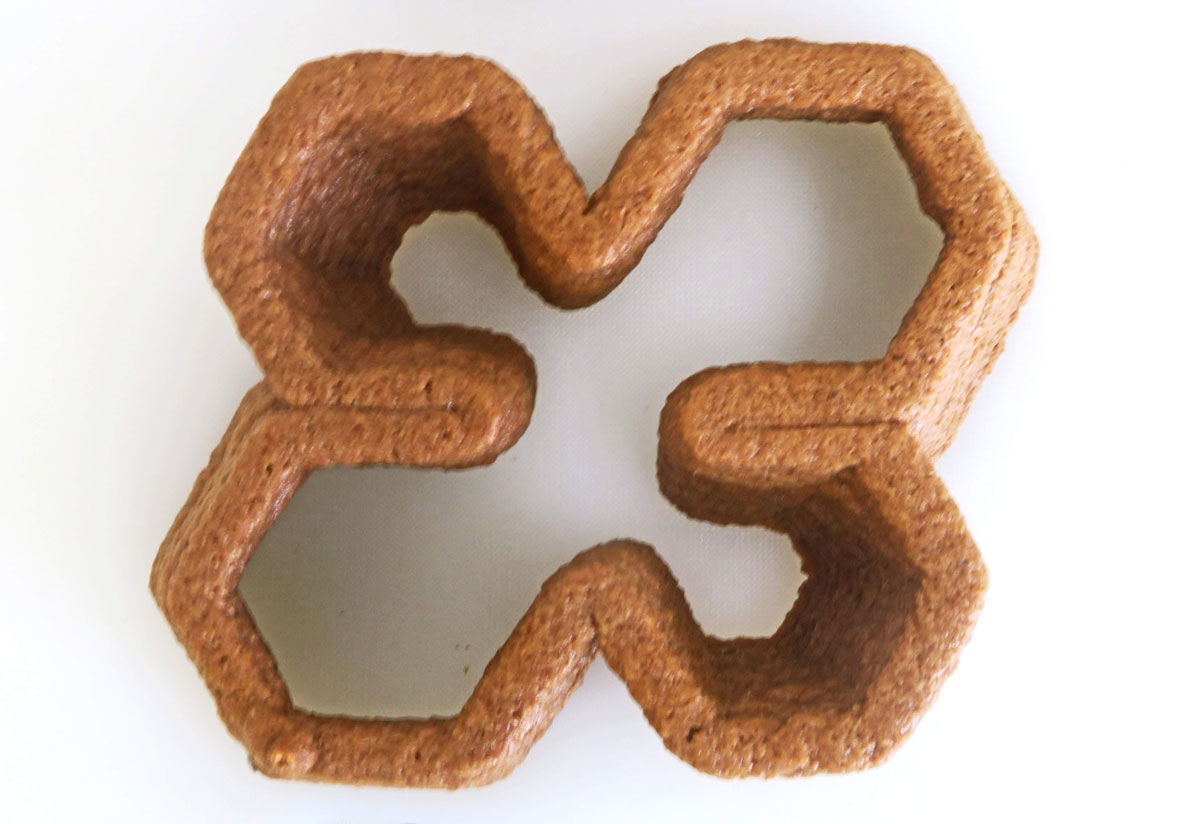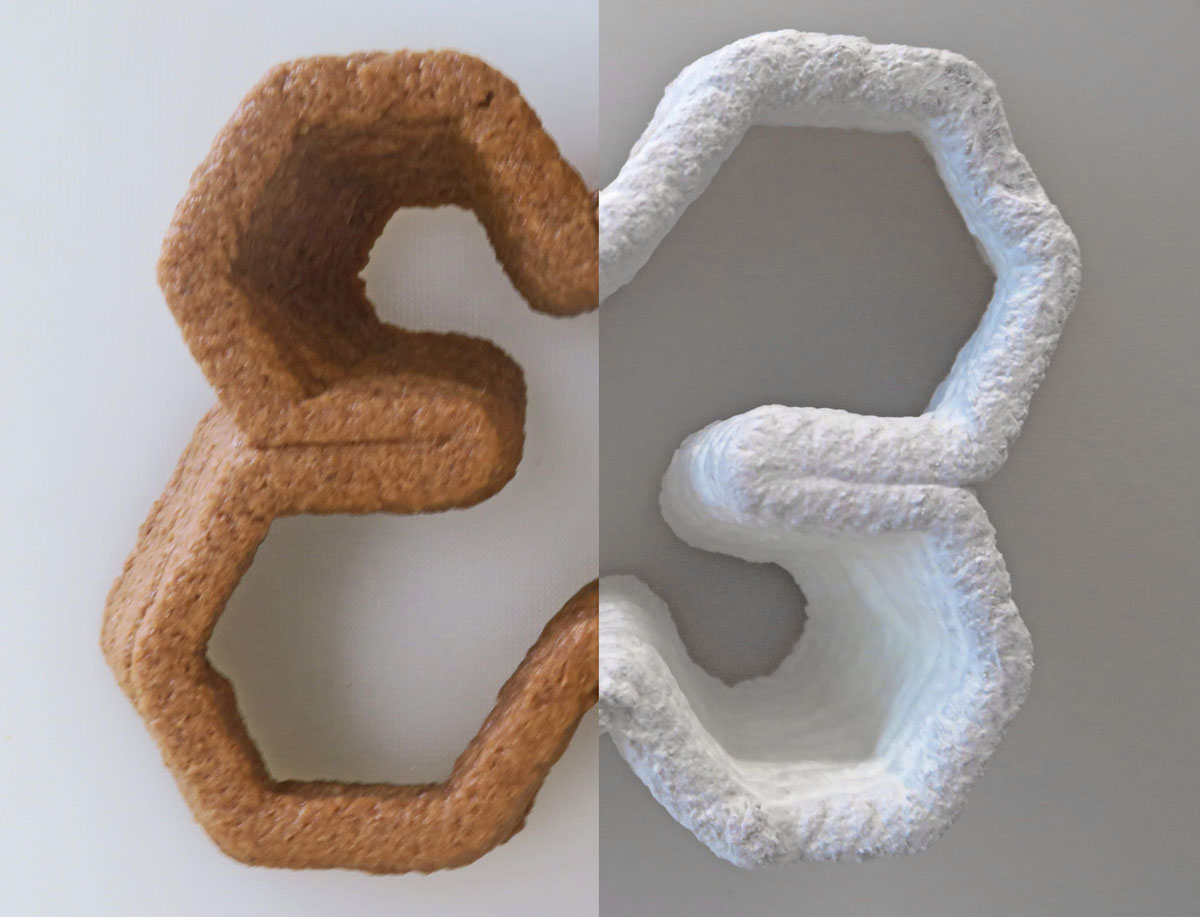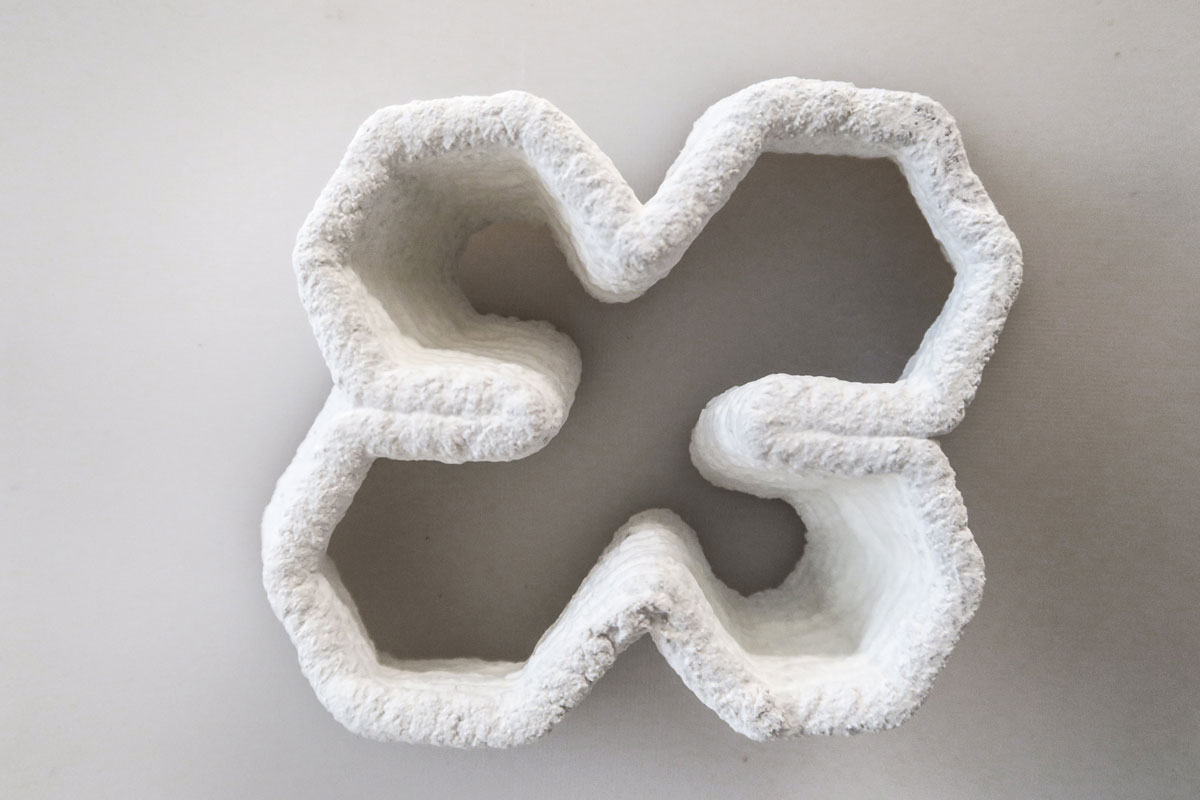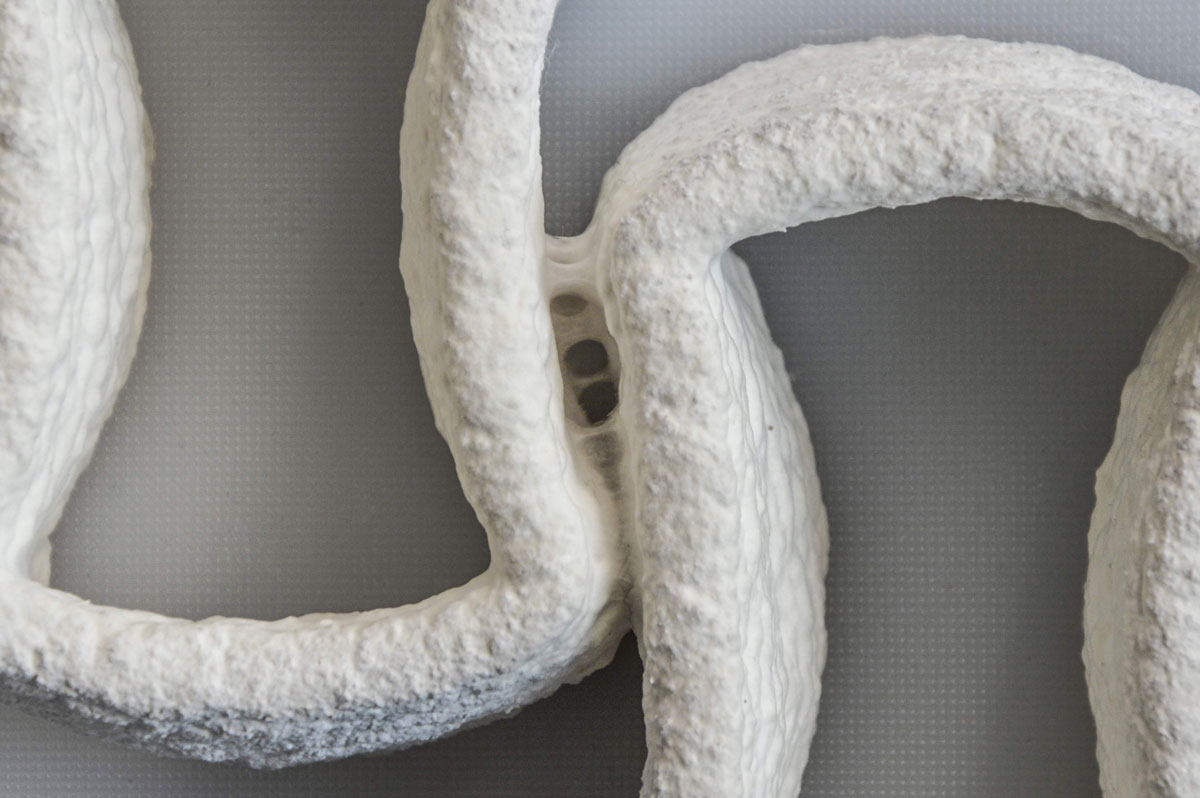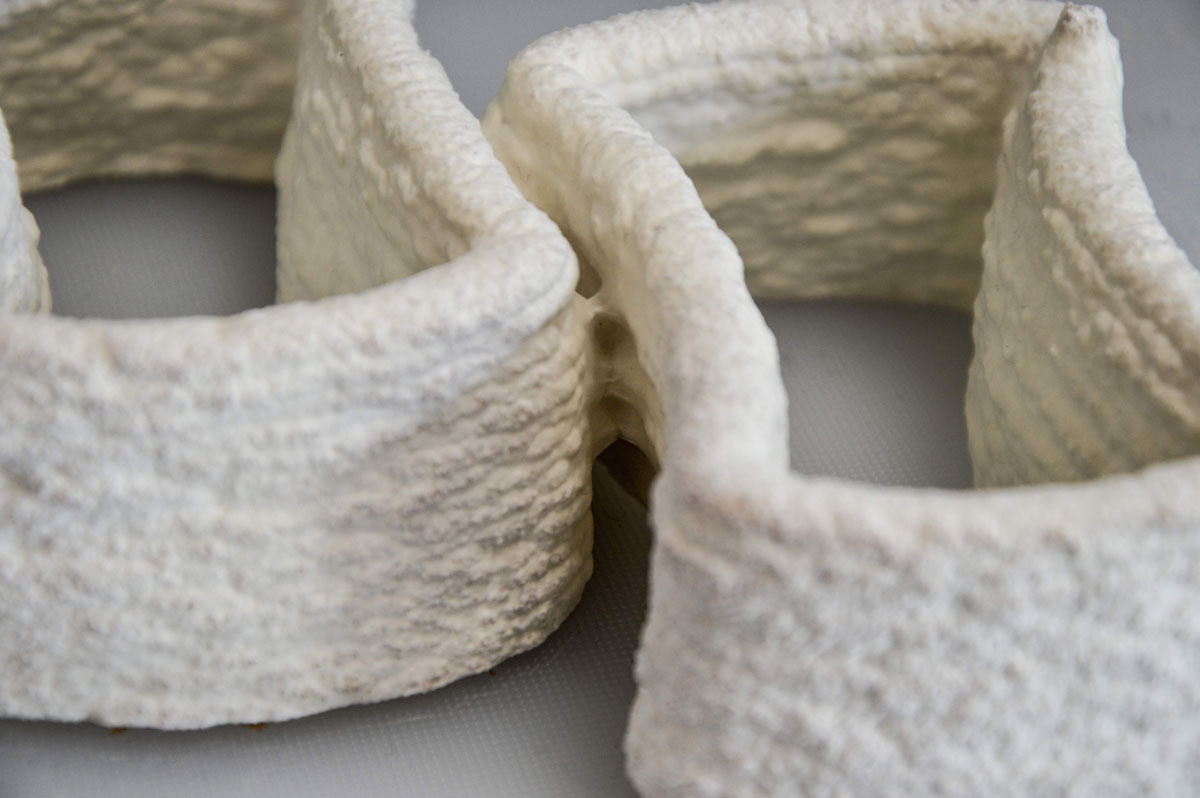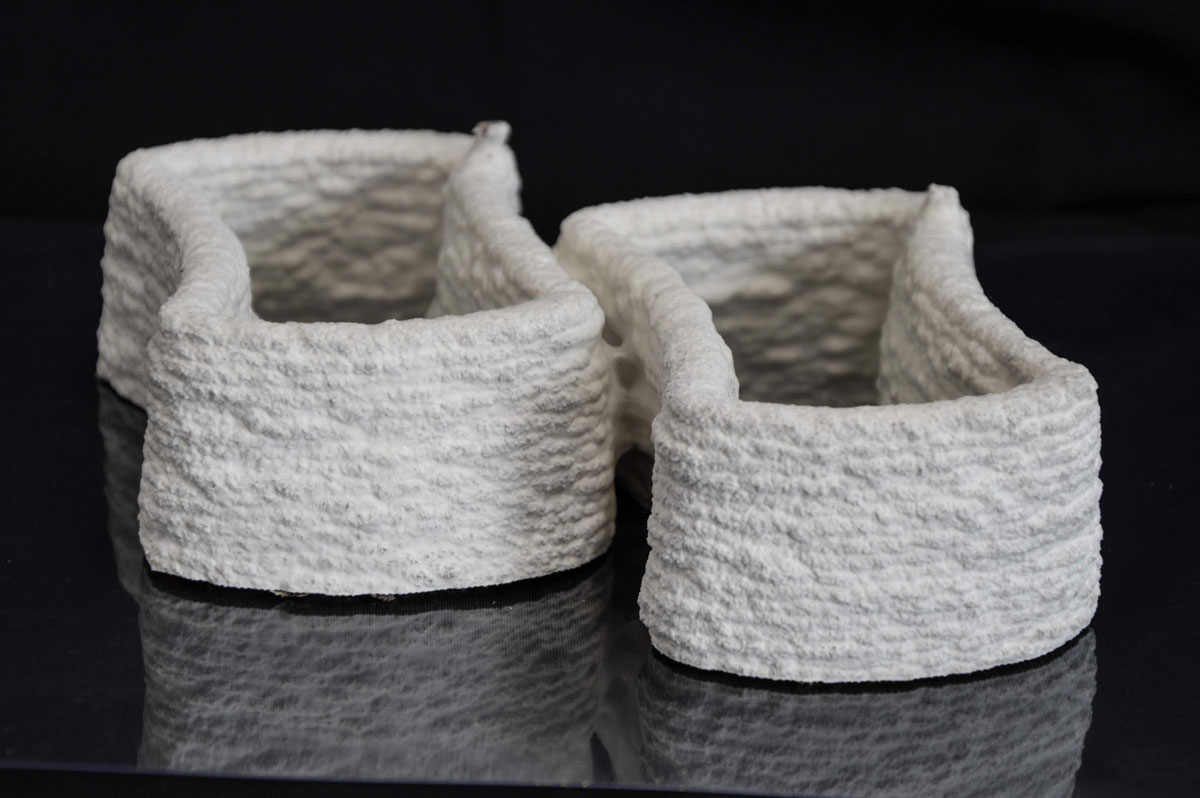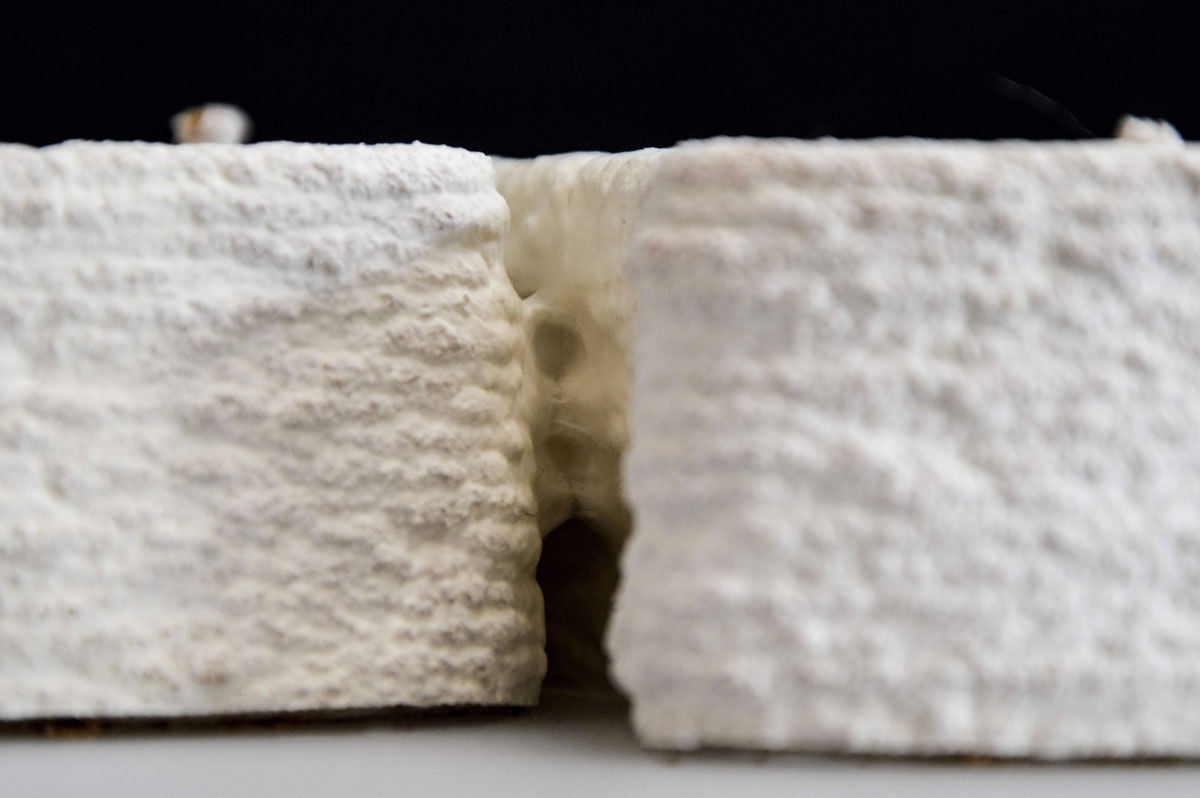BIO EX-MACHINA
Biological meets Digital Computing & Robotics
Bio Ex-Machina is a collaborative research project interweaving digital and biological computation through the use of robotics, targeting the definition of new tools and biofabrication-driven strategies as part of the design process, for the definition of unprecedented structures and applications.
Looking at the accelerated convergence of Bio-Computation with the emergent Material Age, it’s easy to observe the contemporary merge among technologies, such as biology, digital computation, material science or traditional mechanics. The intersection between Computational Design and material-systems is quickly turning into a new design language, fostered by the potential expressed through additive fabrication techniques.
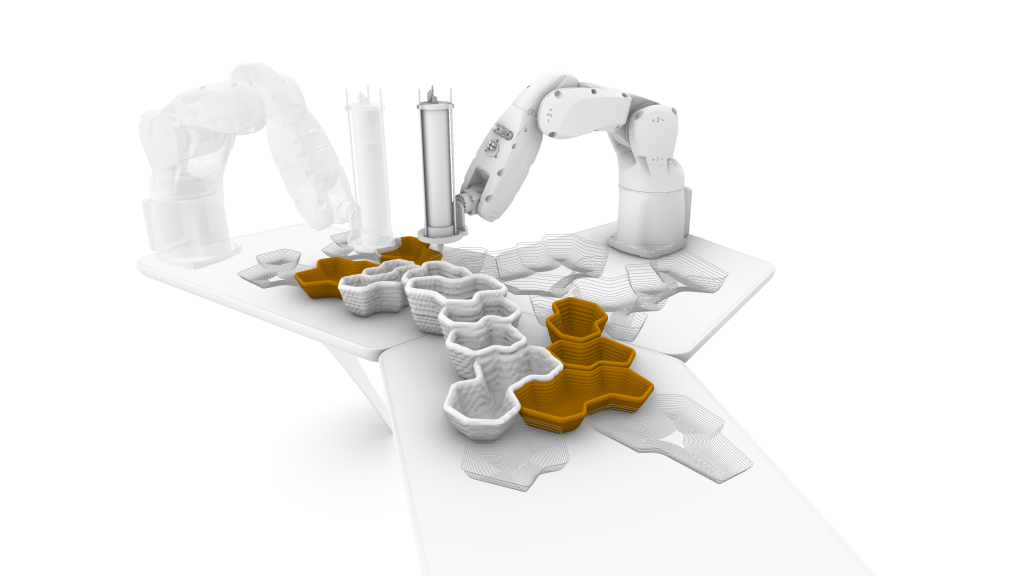
By closely partnering with other-than-human living systems, we are now designing by literally cultivating materials and applications to achieve novel functional and aesthetic properties (i.e. Biofabrication).
The design paradigm thus changes from linear, mono-directional flows to a process of guided growth, where the constraints of material and production systems are embedded in the initial interaction behaviours.
Provided the described context, Bio Ex-Machina investigates the merge between digital algorithms, living agents, robotic behaviour and additive bio-facturing, targeting the design of bespoke bio-fabricated furniture (i.e. room divider) for interior environments.
The project focuses on designing customised, on-demand objects, as hybrid eco-systems, by programming morphogenetic processes and robotic behaviours for the synchronised deployment of algorithmically designed, bio-fabricated artefacts.
By incorporating growth-time as 4th dimension, the artefacts colonise, morph and expand on the digitally computed volumes, benefiting from the transformative qualities of mycelium-agents by means of hybrid growth protocols (i.e. Bio-4D-printing)
Thus, Bio Ex-Machina challenges the current state of inanimate objects and shallow replication, where the physical is a perfect copy of the digital. By letting biofabrication and growth becoming an integral part of the design process, new morphologies and aesthetics arise.
Accordingly, design and creation become a dialogue among systems – programs, machines, and living cells alike – capable of autonomous decisions and computing, allowing to investigate new forms and methods to conceive user interaction.
Thanks to an approach rooted in modularity, Bio Ex-Machina looks at the creation of artefacts enabling a large variety of composing solutions and of deriving physical items. Key to the project is that, once deposited, the living artefacts are assembled allowing further growth, consolidating a strong bond due to the biological joinery which the selected mycelium agents are capable of creating (i.e. BioWelding)
Overall, the project experiments with new ways for co-designing with the living. In fact, by defining a new balance in regard to the autonomy of a rational process and intention, the designer becomes guardian of an unfolding process; one that can to a certain extent be directed, while preserving its own operational self-determination.
___
NOTE: The research conducted as part of the development of Bio Ex-Machina has been partly contributing to inform the collaborative research project Growing Fungi Structures in Space, conducted by Officina Corpuscoli, Utrecht University and the European Space Agency’s Advanced Concepts Team (ESA/ ACT). For more information about it, please check the following links: Link1 / Link2 / Link3 / Link4 / Link5
CREDITS:
